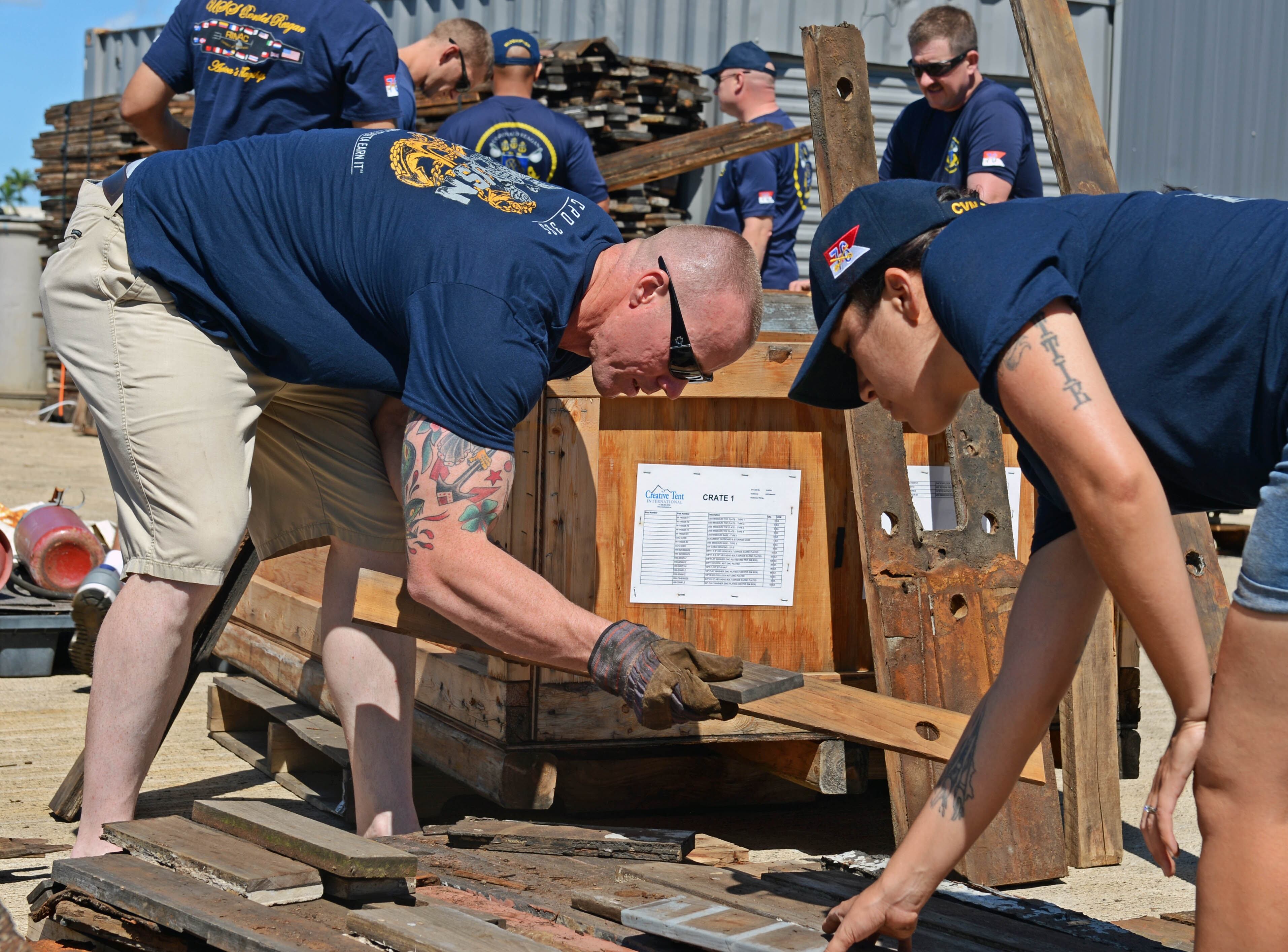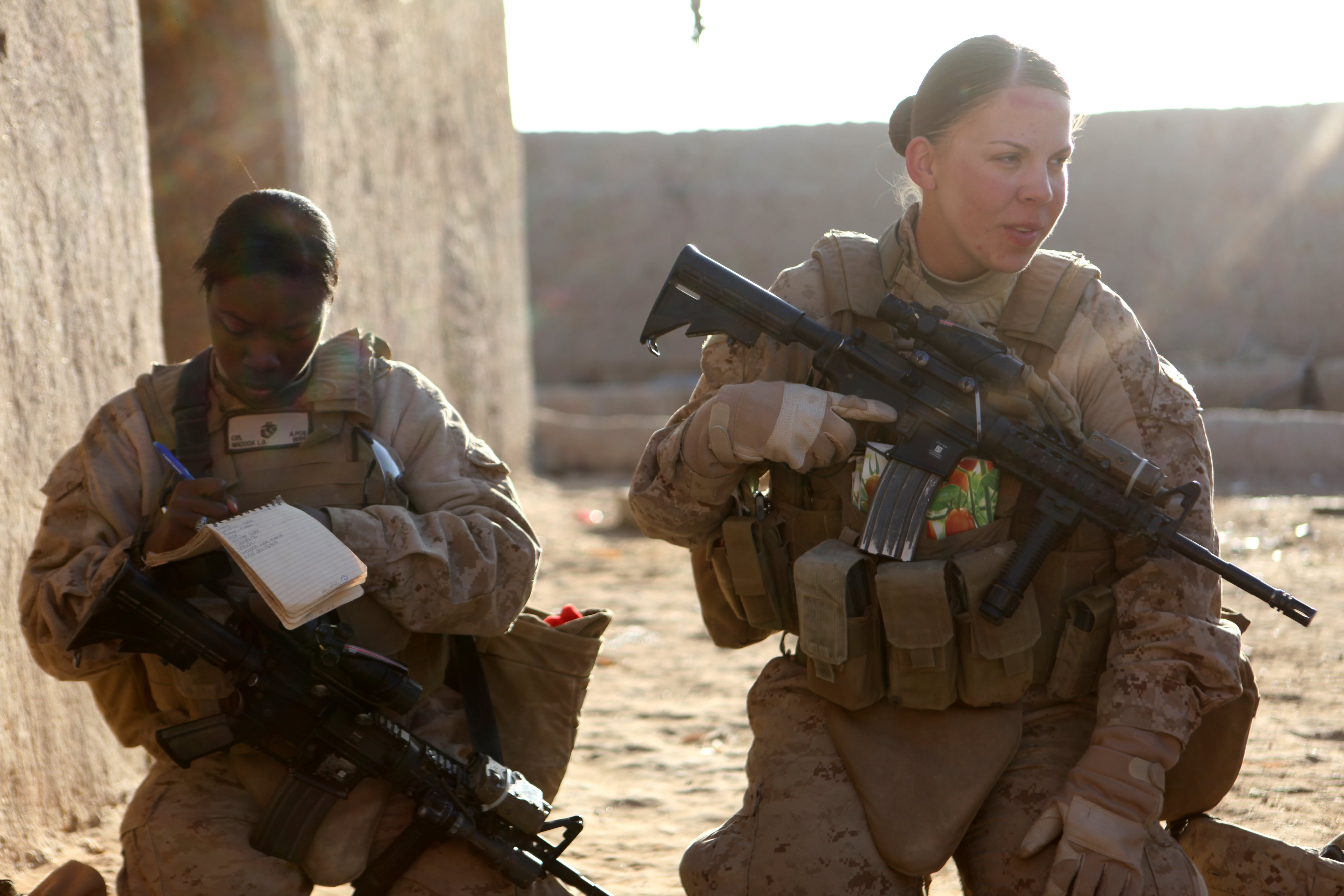Pinning on the anchors of a chief petty officer may be the biggest milestone in an enlisted sailor's career, Getting anchors pinned on may be the biggest milestone in an enlisted sailor's' careers. B,but successful candidates for E-7 don't they didn't get there alone.
Sure, earning one's anchors comes with years of long hours and the willingness to take on tough jobs, but your the ability to move up the ranks also depends on the willingness of command leaders one's leadership and belongs to your leadership and your command to invest in developing top-notch sailors.
Often what sets apart the best commands from the rest are their focus on training first class petty officers. Sometimes — although not always — that can mean and having leadership, including officers, who have enlisted experience., according to new advancement data obtained by Navy Times.
Over the lpast three years, the Navy's chief-eligible population has fluctuated between 26,635 and 29,400, while the number of those selected to advance in each annual selection board has averaged between 3,811 and 4,352, according to new advancement data obtained by Navy Times. On Annually, an average, of 15.1 percent of the eligible first classes make chief each year, almost 1 in 7, or almost just under 1 in 7, makes chief.
Using the latest official data from the Naval Education and Training Professional Development and Technology Advancement Center, Navy Times analyzed the numbers used the latest official data available from the Advancement Center to figure out what the Navy-wide numbers really are, and to "rack and stack" commands with at least 10 eligible first class petty officers to see which ones did the best job in 2015 of helping have the best in helping first classes them get into the chief's mess. Navy Times only ranked commands with 10 or more eligible to prevent ranking tiny commands with medium and large ones.
The result: a list of 30 top commands that advanced the most chiefs as a percentage of eligible candidates. The analysis also yielded the 30 commands with the most eligible first classes that failed to mint any new chiefsed the fewest chiefs of their candidates.
Fleet winner
The envelope please ...
And the winner of the best command to advance chiefs in fiscal year 2015 is… [gasp] a fleet command: dock landing ship Oak Hill.
The Little Creek, Va.-based Oak Hill saw 7 of its 13 eligible first classes, or 54 percent, make chief in the fiscal 2015 cycle — surpassing shore commands that have a reputation for as jobs with lighter hours and where sailors have get more time to study and prepare for the chief's exam. Candidates must, at a minimum, pass this exam to be assessed by the chief's board.
And it wasn't just Oak Hill at the top. Ten of the 19 CPO candidates aboard the destroyer Curtis Wilbur saw 10 of their 19 CPO candidates, or 53 percent, were get selected.
"I knew we'd done well with our candidates, but I had no idea we were tops in the entire Navy," Command Master Chief (SW/EXW) Jamie Hamilton of the Oak Hill told Navy Times in a recent interview.
Mentoring is key
Since the The CPO-365 mentoring program was established in 2010 as a year-round training and mentoring program for chief hopefuls, although there's been no official evaluation of how well commands are implementing it.
But those aboard the Oak Hill The winners say the investment of ing time and energy into for chief training is a critical factor in their success.
"It's a testament to how seriously our command takes the CPO-365 program and process and the work that has been put into the effort by both our first classes and our chief's messes," explained Hamilton, who said his commanding officer gave him the latitude he needed to develop and provide meaningful that he was given the latitude by his commanding officer to develop and give good chief training each week.
"It shows what this program can do for your command if you take the time and put in the effort," Hamilton said. "For this command, we view it as an investment in our sailors, and now that's paying dividends for us."
Cmdr. Bryan Carmichael, the ship's CO, called the year-round training and mentoring program "invaluable" and chalked it up as one of their ship's best achievements. It wasn't easy at first, though.
"Initially it takes a little time out of the schedule each week," Carmichael said. "But it's like anything you do that is important, you must invest holistically in the concept and inevitably the results in leadership will pay off twofold in the end, with a better trained and more professional leadership team."

First class petty officers conduct a CPO-365 community service event aboard the battleship Missouri. A successful program takes commands willing to give time to this effort on a regular basis.
Photo Credit: MCS Emiline L.M. Senn/Navy
Chief training
Training chief candidates throughout the all year with engaged, diverse and interactive sessions is a crucial part of a top performing command.
"You don't just dust off last year's program and start over from page 1," Master Chief Petty Officer of the Navy (AW/NAC) Mike Stevens told Navy Times Feb. 17. "To be effective, CPO-365 needs to be a living and breathing thing.
MCPON urges chiefs to be creative and look at all the service's new instructions, programs, naval messages and news — good and bad – for use as material for instruction and discussion.
"Growing good chiefs doesn't come easy," Stevens said. "It's hard work, and the best chief's messes roll up their sleeves and get to work every year and work to create good training programs and opportunities for their first classes."
And it takes more than chiefs to make this work.
"It takes commands willing to give time to this effort on a regular basis," he said. "What's clear is that the good commands take the hit and give that time and get back the investment of time with plenty of interest in making good new chiefs."
Engaged leadership
Carmichael knows the value of training chiefs. He was one himself.
The 49-year-old skipper served for 12twelve years as an enlisted sailorman. He was surface warfare qualified and rose to be a chief electrician's mate before he was selected for the enlisted commissioning program.
"We focus on training and mentoring all our PO1s for the entire year, not just the ones selected for CPO, during the initiation season," Carmichael said. "This way the CPO mess is engaged in mentoring the entire year, not just for a couple months prior to pinning and then we forget about it until the next year."
Chief's training is also a priority for the third member of the command's triad, who also had led an enlisted career before going officer.
Executive officer Cmdr. Orlando Bowman, the ship's executive officer, rose to the rank of Aviation Ordnanceman 1st Class (AW) before he, too, was picked up for a commissioning program.
Hamilton believes that credits having a former chief as a CO and a former first class as an exec has made as making his job much easier. They give him , giving him the time and the leeway to lead training as he sees fit.
"Buy in from your command's leadership, your triad, is so crucial, and it can make or break your program," Hamilton said. "It just can't be underestimated how much impact that has on the success of a program — and I can tell you that it's definitely not treated this way at all commands in the Navy."
To be sure, you don't need a skipper or XO who are prior enlisted, they just need to be engaged in first class mentorship and skilled at helping first classes get the challenges and successes — and evaluations — they need to be noticed by the selection board.
Still, it doesn't hurt to have a mustang skipper. The Curtis Wilbur CO, Cmdr. Hans De For, is a former torpedoman second class.
Mark D. Faram is a former reporter for Navy Times. He was a senior writer covering personnel, cultural and historical issues. A nine-year active duty Navy veteran, Faram served from 1978 to 1987 as a Navy Diver and photographer.





